I live in a 120-year-old, 8-floor, 25-unit, brick-and-wood-framed apartment building in Brooklyn Heights. The first thing that crossed my mind circa 2018 was that the building will be hit by the new Local Law 97 passed in by City Council in 2015 as part of the ambitious Climate Mobilization Act. Beyond the intent of the law, which is to incentivize buildings like ours to undergo energy-efficient retrofits to reduce our carbon footprint, fines loom. Starting in 2024 we, along with thousands of other landowners, will have to pay $268 per year for every equivalent ton of carbon dioxide (tCO2e) that we emit beyond specifically-defined limits—limits which will progressively tighten as time goes on. No one on my co-op board seemed to even know about this, so I decided to spearhead the initiative.
The first step is to gather information. How does the law affect us? What is our building’s carbon footprint? What pathways exist for us, from a design, engineering, construction, and financing perspective?
The second step is to make a collective choice. This is a critical step because things become political—that is, I may have to compromise or strike a tune with my fellow residents that doesn’t necessarily put climate action as the top priority.
The third step is to execute.
As of summer 2022, I both drafted a Local Law 97 & Climate Action Report for our building, and managed to obtain a quote from a state-certified consultant who would perform a building energy audit and present a concrete roadmap for us to follow. Read the report below, and download a copy here.
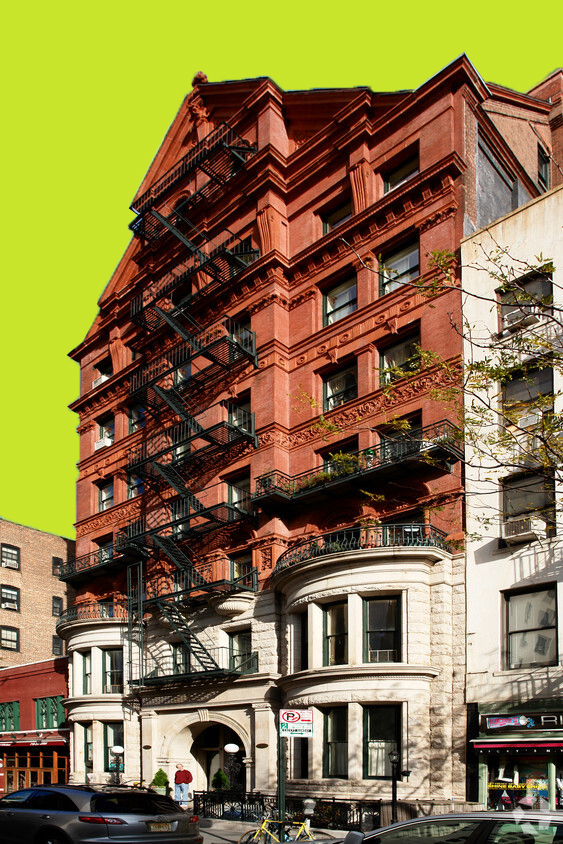
Introduction
This report has been prepared to summarize the issues faced by the 105 Montague Street building and residents in the coming years to bring the building up to standards set by the City of New York as part of the Climate Mobilization Act of 2019, especially its associated Local Law 97. Its intent is to help us, as shareholders and concerned citizens, to build a feasible action plan for adapting our building to the changing climate and satisfying the intent of the law.
Per my estimate, we will be charged $760/yr starting in 2024 and $41,863/yr starting in 2035. Financing options are running out. Retrofits can take years. We need to act.
This report has been prepared independently by Ivan Himanen, apartment 504.
Background
The climate crisis is known to us all, but it is particularly relevant to the built environment. The construction and operation of buildings emits more greenhouse gases (GHGs) than any other sector (manufacturing, transportation, agriculture). For new buildings being built, the aim is to decarbonize the construction process. But for existing buildings, decarbonizing operation is more critical.
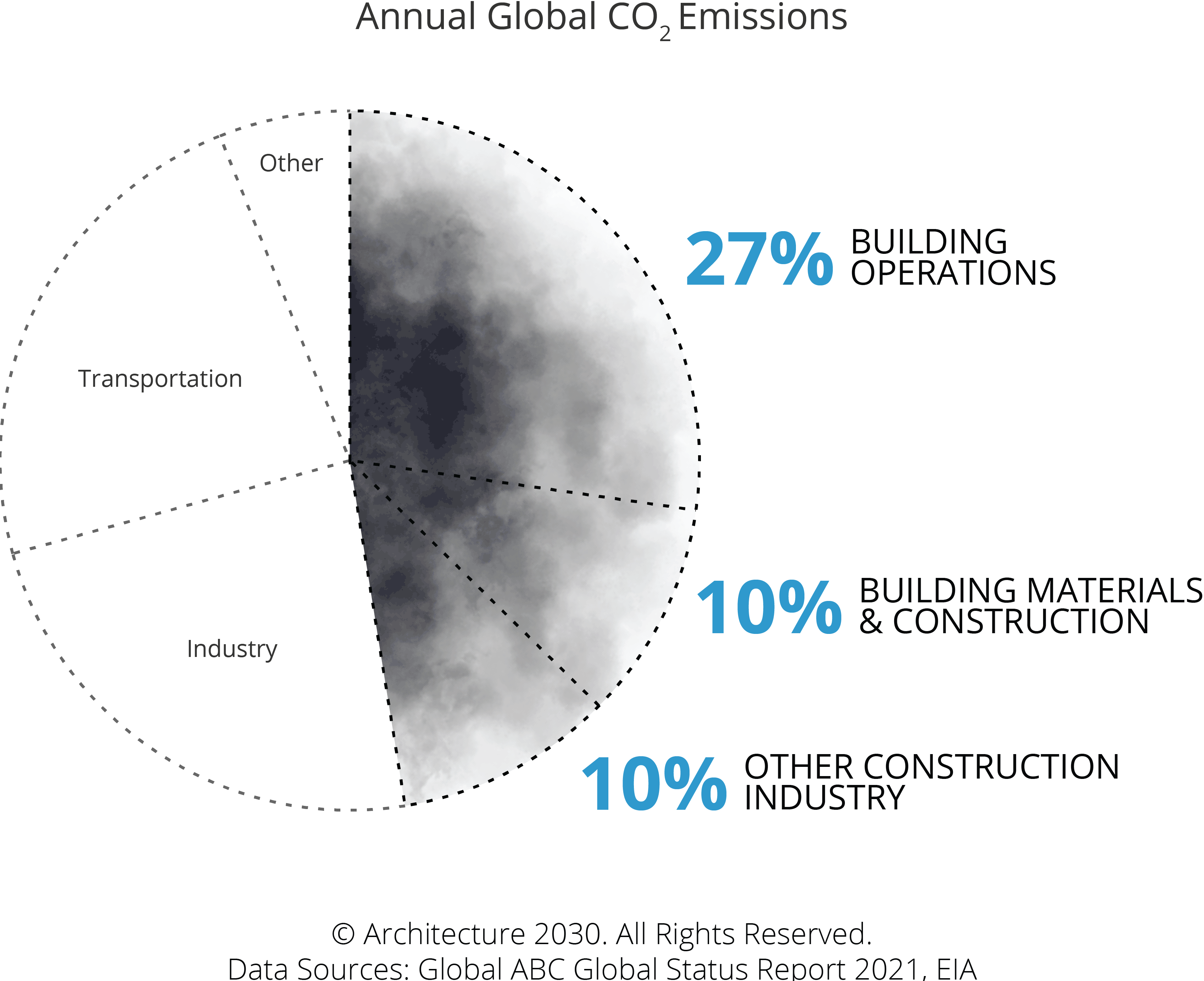
Building operations consist of the energy used heating & cooling spaces, and electricity used to run appliances and light fixtures. Carbon footprints include the environmental effects of burning fossil fuels on site (boilers) and at the source of electricity generation. According to the New York City Mayor’s Office of Climate & Environmental Justice, residential buildings have a larger carbon footprint than any other building type, emitting about 16 million tons of carbon dioxide equivalent (tCO2e). The energy sources responsible for most of those emissions are natural gas and electricity, with fractional additional emissions coming from #2 & #4 fuel oil and steam.
What are greenhouse gases (GHGs)? GHGs are compounds in the atmosphere that absorb and emit radiation at specific wavelengths and cause the Earth’s surface to heat up. Water vapor (H2O), carbon dioxide (CO2), nitrous oxide (N2O), methane (CH4), and ozone (O3) are the primary GHGs in the Earth’s atmosphere.
What are tons of CO2 equivalent (tCO2e)? tCO2e translates the amount of emissions for any mixture of GHGs into the same amount of emissions if the mixture were only carbon dioxide. This is a universal measure of emissions, since carbon dioxide is the most widespread GHG in the Earth’s atmosphere. If you drive a car, you emit one (1) tCO2e for every 112 gallons of gasoline you consume
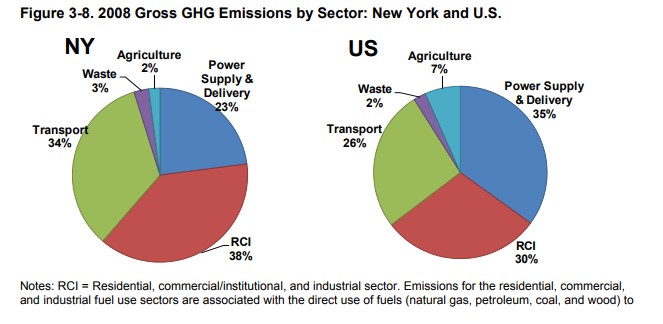
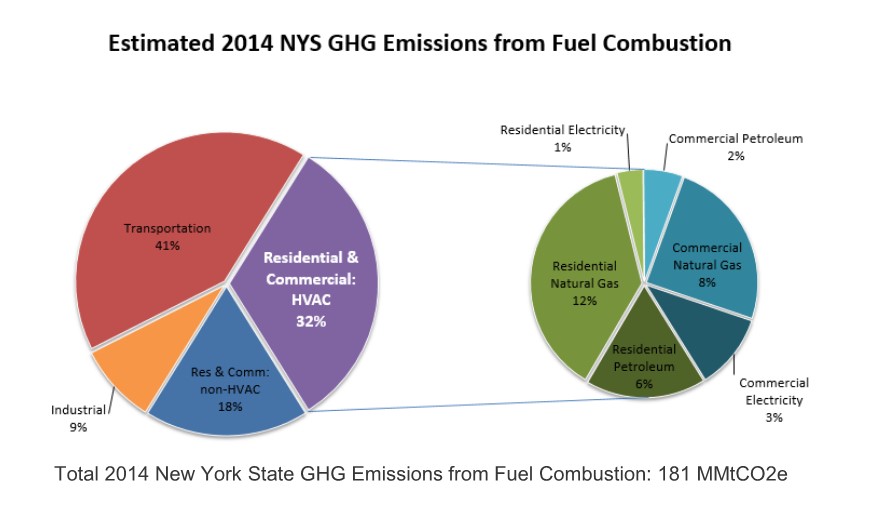

In 2019 New York passed a series of laws targeting the climate crisis, collectively called The Climate Mobilization Act. It includes laws mandating green roof construction (Local Laws 92 and 94), expansion of building energy efficiency grades (Local Law 95, amending Local Law 33), Property-Assessed Clean Energy (PACE) building upgrade financing (Local Law 96), and its centerpiece, Local Law 97.
Local Law 97
LL97 sets tCO2e emissions limits on buildings above 25,000 square feet (105 Montague has about 40,000). It starts with the goal of reducing citywide aggregate emissions by 40% by 2030 and 80% by 2050 relative to 2005 levels. Starting in 2024, the law will force every building to submit an annual report demonstrating compliance with the law or pay civil penalties. Limits & penalties vary per occupancy type (residential, commercial, retail, etc). The limits for R-1 Residential Buildings (105 Montague’s occupancy) are as follows:
- 2024 – 2029: 0.00987 tCO2e per square foot;
- 2030 – 2034: 0.00526 tCO2e per square foot;
- 2035 – 2050: 0.0014 tCO2e per square foot per year;
- 2050 onward: 0.0014 tCO2e per square foot per year.
The penalties are $268 per tCO2e in excess of the limit. Some buildings may be granted deductions to these limits by purchasing greenhouse gas offsets or using clean energy sources. The law makes very few exceptions, excluding only government buildings, generation plants, NYCHA housing, rent-controlled housing, and religious buildings. In my reading, it is incumbent on all New Yorkers to do what they can to meet the standards of the law.
How’s Our Building Doing?
105 Montague was built in 1899 and last renovated in 1980. The building boiler runs on fuel oil primarily, with the capability of switching to natural gas if oil runs out. Each apartment has baseboard radiators. Its structure is wooden, with concrete block cores, and a brick masonry exterior. Windows are double-glazed, but wood-framed and low-performing. It is safe to say the building runs on aging equipment and is not well-insulated.
The Building Energy Exchange, an energy non-profit, has developed a LL97 Calculator which inputs a building’s square footage, occupancies, and utility bills. It outputs an estimated energy intensity (tCO2e per year) and states where the building stands relative to emissions limits. I ran the numbers based on our recent utility bills. 105 Montague emits about 212 tCO2e/yr. Per the law, our building’s emissions will be capped at:
- 393 tCO2e/yr starting in 2024;
- 209 tCO2e/yr starting in 2030;
- 56 tCO2e/yr starting in 2035.
The results indicate that starting in 2030, the co-op will be penalized $760 per year, and starting in 2035, $41,800 per year. In order to comply with the law and avoid penalties, we will need to reduce our energy intensity by 3 tCO2e/yr by 2030, and 156 tCO2e/yr by 2035. For reference, according to our co-op’s financial statements, we spend an average of $27,500 per year on gas and oil, and an average of $9,500 per year on electricity.
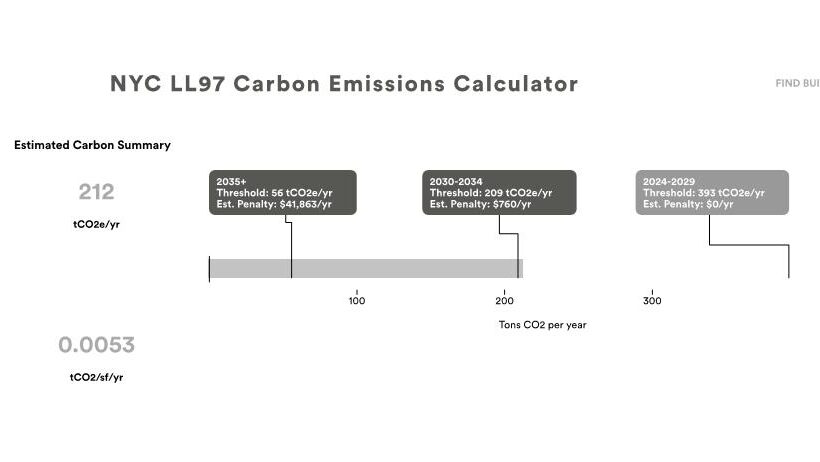
Approximately 85% of our energy use and carbon emissions are in gas & oil, and 15% in electricity. It is clear that we will have the biggest impact in reducing our emissions by improving the efficiency of our space heating and domestic hot water systems—the 85%.
The report is attached at the end of this document.
I have been in contact with Heat/Cool Smart Brooklyn, a local coalition of independent professionals and government agencies to help the borough implement sustainable energy systems. They performed a free building audit on January 14th, 2021 where they visually assessed the boiler room, roof, and building envelope.

HCSB recommended air sealing improvements as a first step for buildings this old. In-window A/Cs are a large electricity draw because they’re inefficient—a better cooling system could save the building several thousand dollars in bills per year. HCSB also suggested simple measures like installing thermal curtains to reduce heat loss. We should also plug holes like disconnected air intakes at the dryers. Window replacement was not deemed a cost-effective improvement, since the rest of the building envelope is low-performing too. They did not glean enough information about how the building is metered electrically or what the exact state of the boiler was, but they said there is room on our roof for enough heat pumps to serve the whole building. For such a solution, coolant pipes would have to be run up and down (perhaps through the compactor rooms) and each apartment install mini-split ACs.
Over the past 5 years, the co-op has paid an annual average of $116,750 on repairs & maintenance—things like elevator fixes, plumbing leaks, and exterior façade work associated with LL11. These repairs can be paid for via special assessments payable by the shareholders—the special assessments levied from 2019 – 2021 have been $201,400, $158,800, and $110,000, and paid for via increases in monthly maintenance bills.
Now What?
The principal questions are:
- What work can we do?
- How do we pay for it?
Energy improvements come in two general flavors: envelope air-sealing (caulking, window & door replacements) and electrification (appliance replacements, HVAC upgrades, domestic hot water system improvements). HVAC upgrades are essential to complying with LL97. Air-source heat pumps (ASHPs) are the best-known energy-efficient heating & cooling system for mid-size residential buildings in big cities. Common variants of this are variable refrigerant flow (VRF) and mini-split ductless ACs. They are space-efficient as well, consisting of a large outdoor unit and small indoor diffusers connected by refrigerant piping. A New York State Energy Research & Development Authority (NYSERDA) analysis in 2019 estimated that installing a new 8-ton ASHP in a 4-unit residential building costs $31,144 in capital expenditure. Their research on large multifamily buildings is ongoing but extrapolating for a 25-unit building suggests a price tag of about $200,000.
State and City agencies and utility companies have many financial assistance programs (see below), but these incentives will not be available once LL97 kicks in, because they are meant to help kickstart citywide sustainability efforts rather than sustain them. To wit: in May 2022 Con Edison announced that its Clean Heat Program funds ran out and therefore had to suspend assistance to properties for new retrofits for the time being or until the City restored funding.
These are my recommended next steps:
- Assess the building professionally. Gather as much information about the building’s performance as possible and identify where the best bang for our buck is. Which combination of improvements will bring us into compliance with the law?
- Identify financing options. Estimate how costly different retrofit options are. Build a financial plan for the co-op.
- Research additional measures such as switching to cleaner energy sources for our utilities.
Here are the many financing programs available:
- NYSERDA is a state agency with the most robust aid. Their Low-Carbon Capital Planning Support helps determines energy consumption and savings, capital costs, GHG reductions, and financial metrics (investment payback, net present value). Their FlexTech program helps pay for a building assessment (we are only eligible if we pay into the electric Systems Benefit Charge on our utility bill). Property Assessed Clean Energy (PACE) financing connects property owners with loans from municipalities, usually by adding a small tax to the property in exchange for access to loans and other incentives for energy retrofits.
- NYC Department of Housing Preservation and Development (HPD) provides affordable loans for buildings under 50,000 SF to perform energy upgrades through its Green Housing Preservation Program (GHPP).
- Con Edison has incentives for multifamily buildings.
- National Grid has incentives for multifamily buildings.
Let’s continue the conversation!
Additional Resources
- NYC website on emissions reporting and LL97 compliance
- New York Greenhouse Gas Inventory, by MOEC and NYU
- Heat/Cool Smart Brooklyn. See this page for useful slide deck presentations.
- Building Energy Exchange
- Urban Green Council reports
- Urban Green Council conference on retrofitting NYC Multifamily Buildings